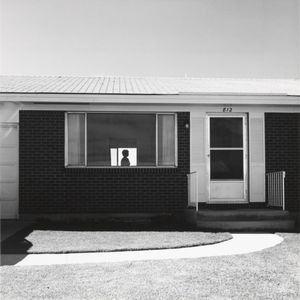New Topographics photography refers to a genre of landscape photography that emerged in the 1970s, primarily in the United States. Characterized by a departure from traditional scenic representations, New Topographics photographers focused on the man-altered landscape and the impact of human development on the environment. In contrast to the romanticized and idealized depictions of nature, New Topographics photographers presented a more objective and often critical view of the suburban and industrial landscapes. The term “New Topographics” was coined from a landmark exhibition held in 1975 at the International Museum of Photography in Rochester, New York, titled “New Topographics: Photographs of a Man-Altered Landscape.”New Topographics photography played a crucial role in reshaping the discourse around landscape photography, influencing subsequent generations of photographers and contributing to a broader conversation about the impact of human activities on the natural environment. It was coined by William Jenkins in 1975 to describe a group of American photographers (such as Robert Adams and Lewis Baltz) whose pictures had a similar banal aesthetic, in that they were formal, mostly black and white prints of the urban landscape.
Robert Adams
Robert Adams is crucial to the New Topographics movement and the field of landscape photography due to his influential work that epitomizes the movement’s ethos. His photographs, often taken in the American West, capture the evolving human-altered landscape with a stark and contemplative style. Adams’ images are characterized by a quiet and understated aesthetic that invites viewers to reflect on the profound changes brought about by urbanization and suburban expansion. His compositions often feature mundane scenes like housing developments, roads, and parking lots, yet through his lens, they become poignant reflections of the human impact on the environment. One of Adams’ notable contributions is his ability to merge artistic expression with a critical examination of societal issues. His work goes beyond mere documentation, offering a thoughtful commentary on the consequences of unchecked development and the loss of natural landscapes. Through his photographs, Adams prompts viewers to confront the complex relationship between humanity and the environment.
The pictures below are created by Adams.

Robert Adams bibliography
Robert Adams is an American photographer who has focused on the changing landscape of the American West. His work first came famous in the mid-1970s through his book The New West. He has received two Guggenheim Fellowships, a MacArthur Fellowship, the Deutsche Börse Photography Prize and the Hasselblad Award.

The picture above shows a minimalistic house with the focal point of a figure of a woman standing in the window while surrounded with rectangular shapes around such as window frames and doors. The monochrome look of this images gives it a solemn and isolated feel. Due to the age of the picture it is likely that the woman in the picture is a housewife who is unchaperoned.
